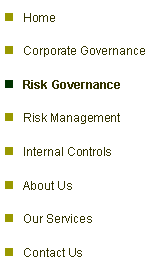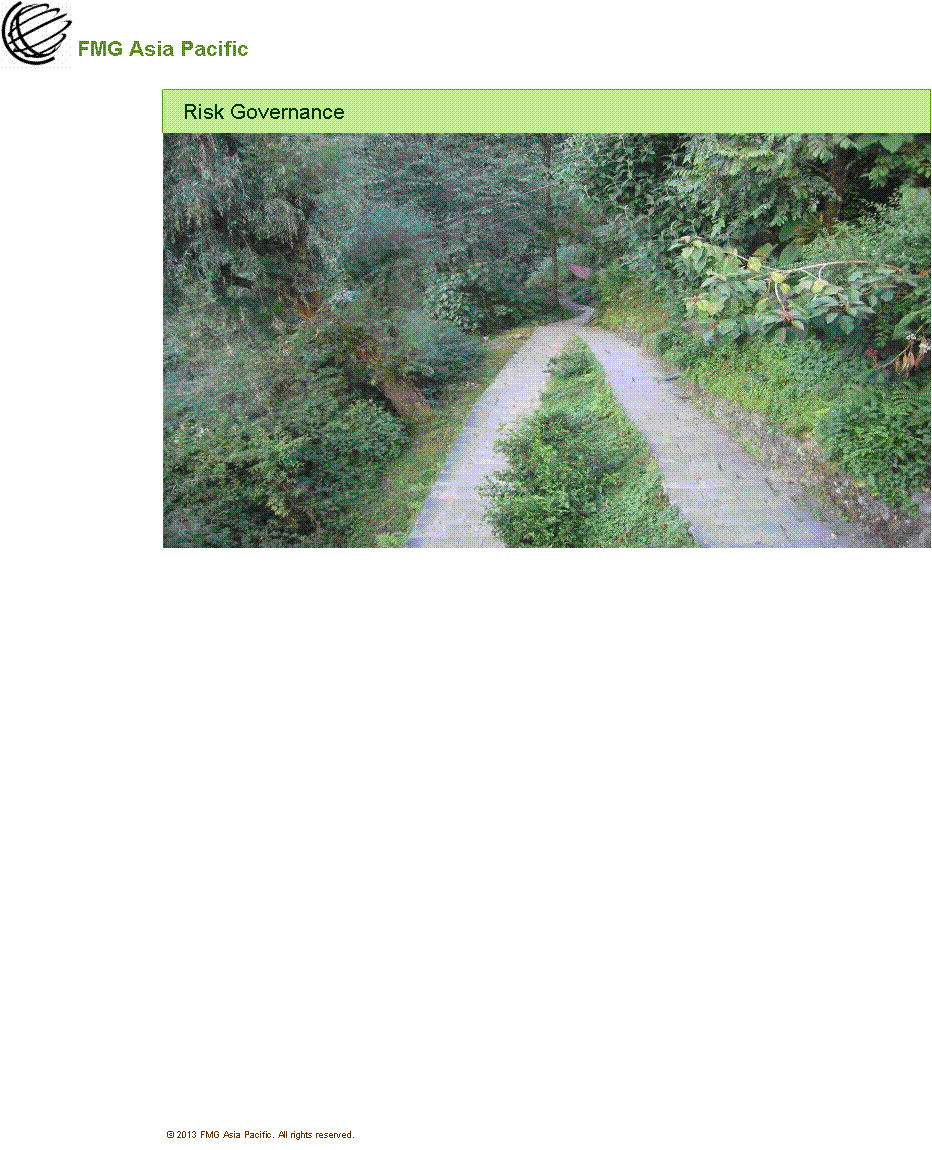
|
Risk Governance provides the framework and the structure within which an organization manages its risks.
The Board is responsible for the governance of risk and they should require that the management in the organization maintains a sound system of risk management and internal controls. This ensures that the company’s assets and consequently the shareholders’ interests, are adequately protected.
In order to compete and succeed in today’s competitive environment, every organization has to adopt an effective strategy and define their strategic objectives. In their strategy setting process, they need to understand what their risk appetite is. What is the nature and level of risk which is acceptable?
Operational and other related objectives (reporting, and compliance) also need to be defined.
In defining these objectives, they need to identify the risks that that may prevent them from achieving their objectives, they need to assess the likelihood of these risks arising, and if they arise, what is the impact on the organization. They then need to determine the measures that can be taken to mitigate those risks.
To achieve the chosen objectives, certain processes need to be in place. These could comprise financial processes, operational processes, and so on. Processes may be at the business unit level or at the departmental level. Processes are in turn broken down into a myriad of activities within the organisation. The process of risk management will also need to be applied to ensure that risks attaching to these processes and activities are identified, evaluated and mitigated. A system of effective internal controls consequently needs to be implemented.
What is your organisation’s strategy? Is it consistent with your risk appetite?
Are you confident that all the risks attaching to your strategic and operational objectives have been identified and appropriate steps have been taken to mitigate these risks? How confident are you that your organization has an effective system of risk management and internal controls?
We can help provide step by step guidance in order to ensure that you have reasonable assurance of achieving your chosen objectives.
|
|
Risk governance requires maintenance of both a sound system of risk management and internal controls. These two paths will ultimately merge into one to enable you to navigate through the risks in your strategic direction. |
